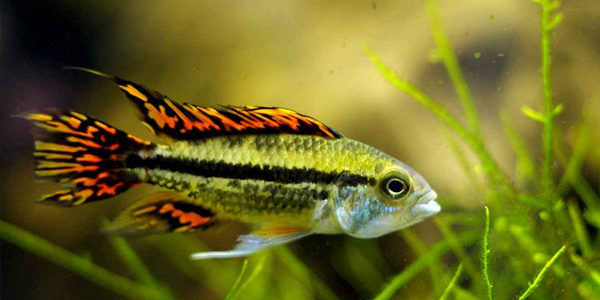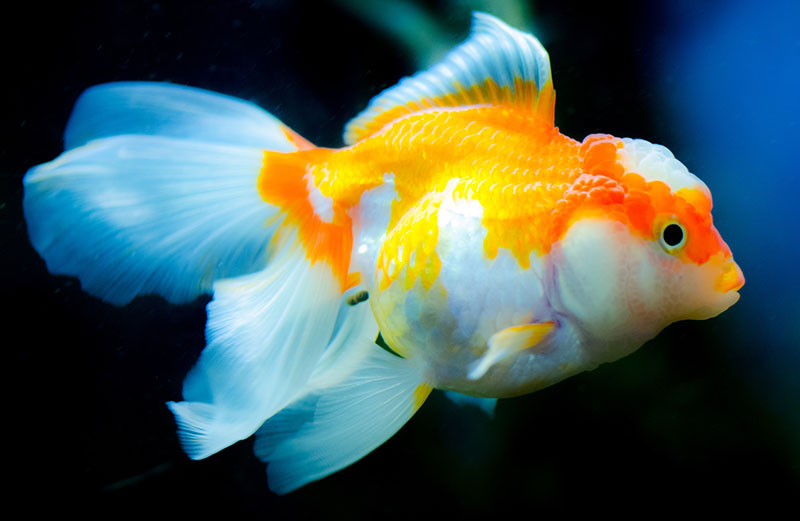Cockatoo Cichlid Care Info: Feeding, Breeding & Diseases
The Cockatoo is a South American cichlid of the Apistogramma genus, extensively appreciated by superior aquarists worldwide. They’re pretty adaptable to many residing conditions, which allows breeders to restore many color variants.
Colors in wild fish fade compared with the house bred fish, nonetheless they nonetheless have spectacular fins. Coloring turns into further vibrant all through courting durations in males along with in females.
The Dwarf Cockatoo is a fairly small and non-aggressive cichlid solely reaching as a lot as 3.5 inches with a lifespan of 3-5 years.

Cockatoo Cichlid Care Info [Overview]
Cockatoo cichlids require a 30-gallon tank. Whereas these fish are pretty adaptable to all types of residing conditions, it’s important to don’t forget that the tank’s temperature mustn’t drop beneath 60°F. Cockatoo cichlids are carnivorous fish that eat bugs and worms.
Tank requirements
As bottom dwellers, Cockatoos require an prolonged, fairly than deep, tank to allow a great deal of swimming home. The minimal for a gaggle of Cockatoos is a 30-gallon tank, nonetheless bigger is always increased.
Heating simply is not always required if the room temperature in no way drops beneath 60 ranges Fahrenheit, nonetheless sudden changes ought to impact your fish.
If you do plan on placing a heater, set it between 72-74 ranges. Cockatoos normally usually are not very delicate to water chemistry variations, nonetheless water changes should be achieved recurrently to keep up pure waste in check.
Feeding your Cockatoo Cichlid
Inside the wild, the Cockatoo cichlids are fully carnivorous fish feeding on bugs, larvae, or worms, nonetheless in captivity it has been seen they don’t seem to be very picky eaters.
Most aquarists feed them flake or pellet diets with good success, though meaty meals are moreover compulsory. Feed them brine shrimp, youngster brine, bugs, crustaceans, or earthworms day-after-day as a strategy to have healthful fish.
Keep meals are moreover very appreciated as a result of the Cockatoos are predators, nonetheless make sure any feeder fish or shrimp you add to the tank is pathogen-free and will not unfold infections amongst your fish.
If you plan on breeding them, feed your Cockatoos chopped earthworms, reside black worms, daphnia, cherry shrimp, or reside brine shrimp to boost nutritional vitamins and assure worthwhile breeding.
Fry should be consumed microworms or newly hatched brine shrimp, nonetheless they could additionally generally graze on crops, nipping on the nutritious biofilm rising on the leaves.
Diseases
With appropriate tank repairs, high-quality water and meals, and no sudden changes inside the aquarium, sicknesses should not be a problem.
Nonetheless, if the water flip is dirty for prolonged durations, a lot much less oxygen is in the marketplace, or there are sudden pH or temperature shifts, this could stress your fish and weaken their immune system.
The Cockatoo cichlids are weak to the usual sicknesses of freshwater fish. White Spot sickness or Ich is the first to appear on prone fish, nonetheless these will likely be neutralized inside the early ranges by rising the water temperature to 86 ranges for a few days.
If discovered later, it could be dealt with with copper, nonetheless it’s important to make sure no water conditioners are present.
Completely different frequent infections are parasitic infections (protozoa, flatworms, or tapeworms), pores and pores and skin flukes, bacterial infections or turbidity of the pores and pores and skin.
Lots of these infections is also dropped at your tank by newly added fish, crops, or decorations, so make sure to clean them appropriately or quarantine one thing you plan in order so as to add to your tank.
Conduct
The Cockatoo cichlid is a non-aggressive fish that might be saved in a bunch tank, even with larger and peaceful fish. They’re moreover pretty tolerant of their very personal species, with the flexibility to cohabitate in larger groups supplied the tank is massive adequate.
All through mating durations or if further males are present, they’re going to get pretty territorial and present aggressive conduct. It’s possible you’ll avoid this by placing a lot of crops and hiding areas for them to have the flexibility to avoid fastened encounters and calm down.
Chances are high you will uncover your Cockatoos, significantly the males, digging inside the sand and munching on it. It’s not for proper digestion, because it’s in several animals, nonetheless for extracting leftover meals objects fallen inside the substrate; the fish will squirt out any sand retaining solely what they need to eat.
This generally is a common conduct and likewise you shouldn’t worry about it.
Tank mates
Cockatoo Cichlids are sometimes peaceful fish that may do correctly in a bunch tank, along with with their very personal selection. Acceptable non-Cockatoo tank mates will be smaller or same-size fish that are moreover non-aggressive like Cardinal tetras, Dwarf Gourami, Glowlight Rasboras, Julii Cory, Kuhli Loach, or Dwarf Rainbow fish.
If saved in a single-species tank, probably the most appropriate alternative is to keep up one pair, or harem, with one male and 5-6 females. It’s possible you’ll keep a few male if the tank is massive and affords a great deal of hiding areas.
Avoid snails, crabs, or shrimp, as Cockatoos is also aggressive in path of them or try and hunt them.
Breeding your Cockatoo Cichlid
Cockatoos are cave spawners, which means a female will lay her eggs in her private cave. In harem tanks, each female will arrange her territory and guard it in opposition to any approaching fish, other than the dominant male.
It is supreme to place further caves than females, with crops or decorations in between them to supply further privateness.
The male’s colors grow to be further vibrant all through courting durations after they dance and present for the female. The female will lead the male to a cave of her various the place she’s going to put her eggs and allow the male to fertilize them.
After the eggs are fertilized, the female will guard the cave until the fry hatch, a time all through which she’s going to indicate a very good wanting black and lemon yellow coloration.
After the fry are free-swimming, she’s going to herd them throughout the tank from one feeding place to a distinct for a variety of weeks.
If you like small fish with giant personalities, you probably can add this cichlid to your group tank and watch its fascinating conduct. The Cockatoo can also entice consideration to your aquarium with its vibrant and distinctive coloration.






